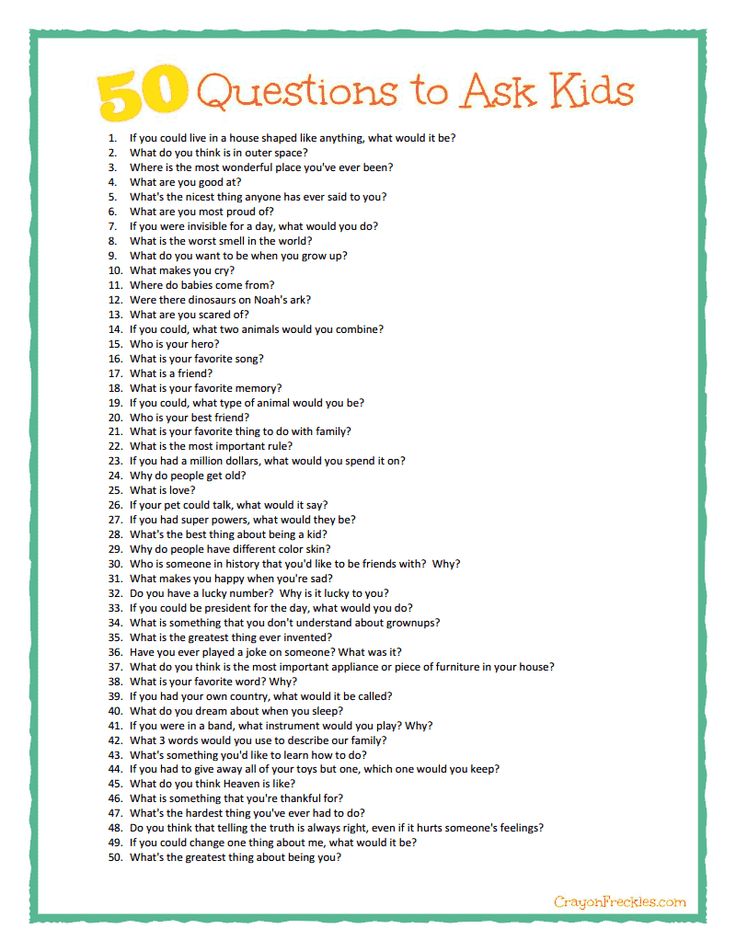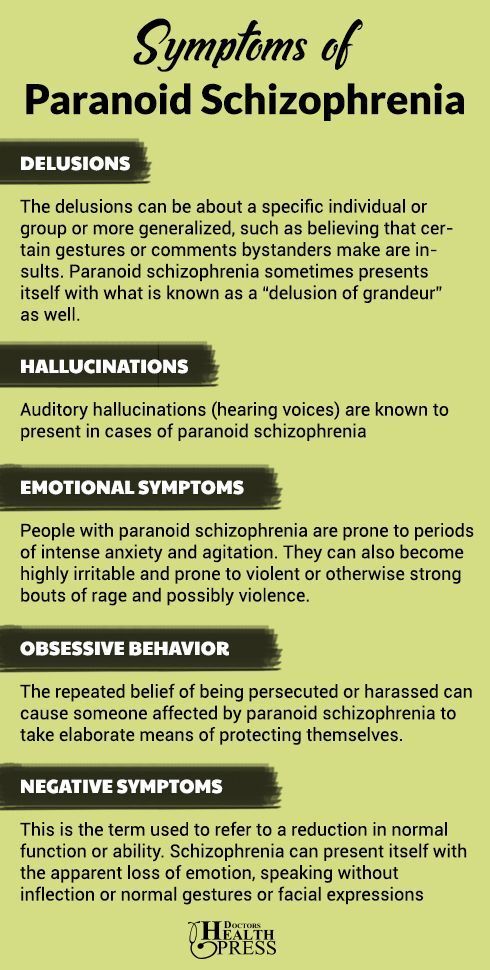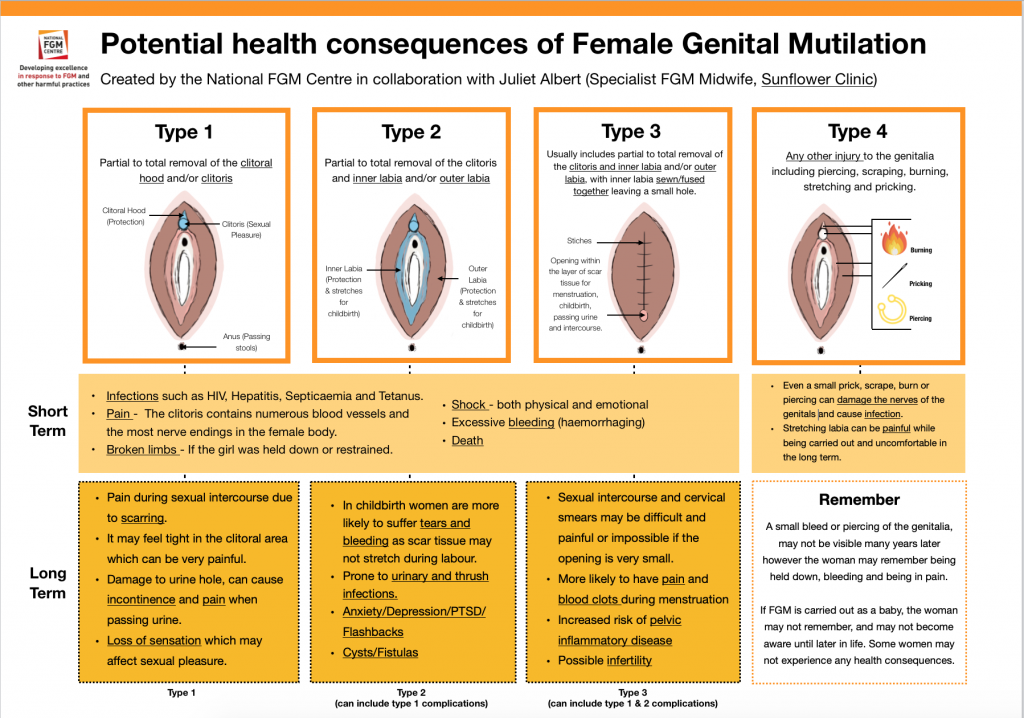Aspergers and writing
Handwriting Problems in Children with Asperger’s Syndrome
Authors: Sheila E. Henderson and Dido Green, Institute of Education, University of London
‘A few years ago hardly anyone had heard of the term (Asperger’s Syndrome) … yet today almost every school seems to have a child with this new syndrome’ (Attwood, 1998).
Since Asperger, a Viennese paediatrician, first described the syndrome that was later to bear his name (Asperger, 1944), there has been a great deal of debate about its status, its particular characteristics and whether it can truly be distinguished from autism (see e.g. Frith, 1991; Howlin, 2000). Recently, however, Asperger’s Syndrome (AS) has gained formal recognition, through entries in the diagnostic manuals of the World Health Organization (ICD-10, 1992) and the American Psychiatric Association (DSM IV, 1994), although doubts continue to be expressed as to whether it describes a distinct clinical entity and how it relates to High Functioning Autism (HFA).
Nevertheless, the inclusion of AS was an important development because of the impact of these bodies on research and practice. Since the manuals present an entire diagnostic system they tend to crystallize our thinking about the relationship between conditions and how these should be described and distinguished, thus providing a focus for remedial programmes. The manuals, albeit conceived within a rather medical framework, are increasingly widely used by professionals in education as well as health, whose task it is to ensure that appropriate criteria are applied before an individual is assigned a particular label.
Although most teachers and therapists will be familiar with the term Asperger’s Syndrome and many will have had direct experience of working with a child bearing such a label, not all will be familiar with the full scale of the problems such children can encounter in school. ICD-10 and DSM IV list similar sets of diagnostic features for Asperger’s Syndrome. They include examples of impaired social interaction and the obsessional pursuit of repetitive or idiosyncratic interests, while at the same time emphasizing normality of cognitive and early language development.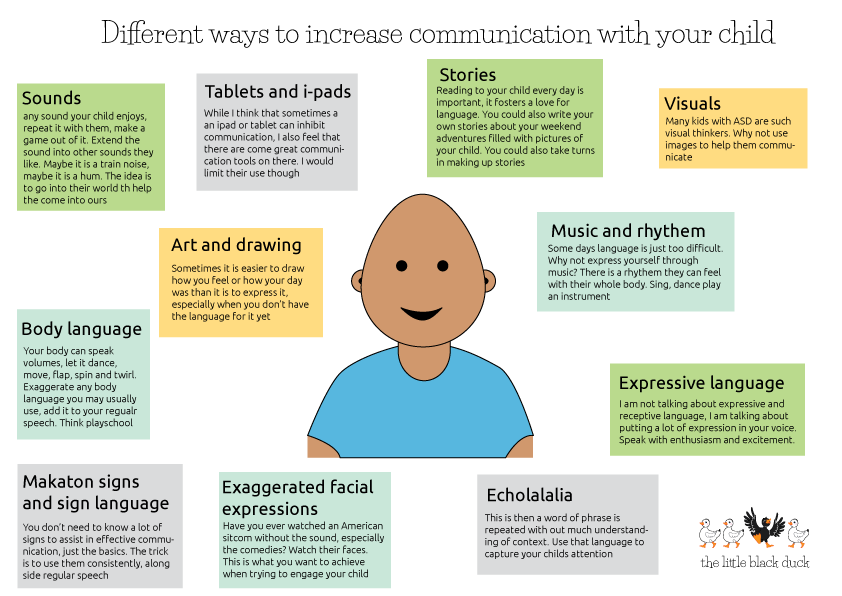 In addition, both manuals mention ‘clumsy’ movement as a common feature but do not consider this to be a defining feature, i.e. one of a set of features that must be present for the diagnosis to be made.
In addition, both manuals mention ‘clumsy’ movement as a common feature but do not consider this to be a defining feature, i.e. one of a set of features that must be present for the diagnosis to be made.
Given the focus of this journal, it will not surprise our readers to discover that it is these movement difficulties to which we draw particular attention in this paper. More specifically, we want to ensure that practitioners are aware of the fact that many children with AS find handwriting a particularly difficult skill to acquire and are likely to need special help right from the start.
Although Asperger himself did not consider the question of whether motor difficulties were characteristic of all children with the other symptoms he described, he certainly attached considerable weight to ‘clumsiness’ in his clinical descriptions of the children with whom he worked. In the classic paper on the syndrome (Asperger, 1944, translated in Frith, 1991), we find four case histories each describing the child as poorly coordinated.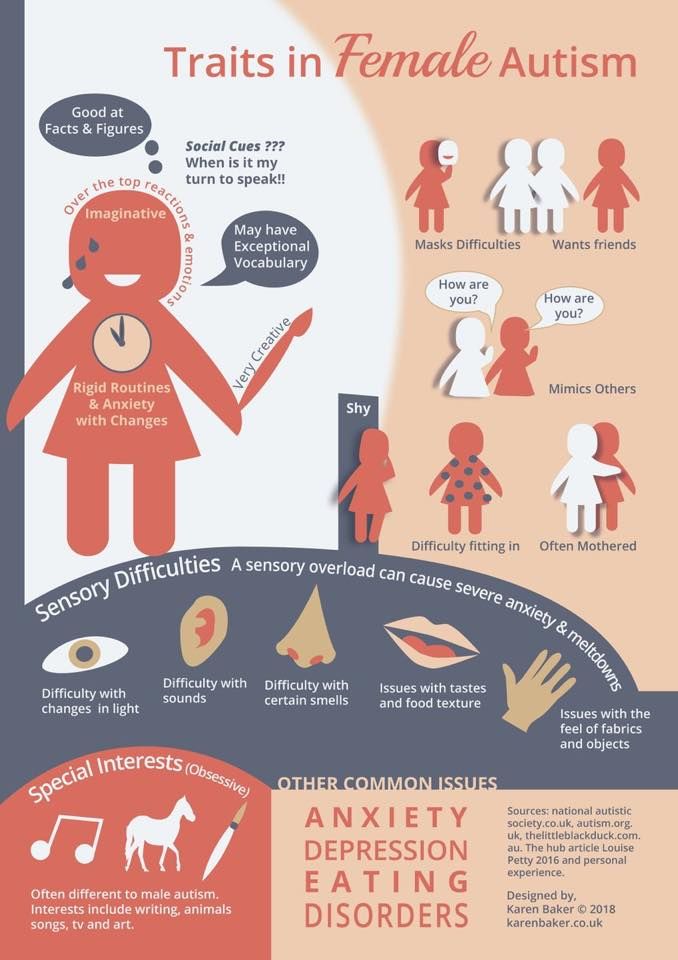 The difficulties mentioned include absence of facial expression, poor fine motor coordination, a lack of fluency in locomotion and in all but once case, special problems with handwriting:
The difficulties mentioned include absence of facial expression, poor fine motor coordination, a lack of fluency in locomotion and in all but once case, special problems with handwriting:
Of Fritz, V. Asperger notes: ‘Writing was an especially difficult subject, as we expected, because his motor clumsiness, in addition to his general problems, hampered him a great deal. In his tense fist, the pencil could not run smoothly. A whole page would suddenly become covered with big swirls, the exercise book would be drilled full of holes, if not torn up. In the end, it was possible to teach him to write only by making him trace letters and words written in red pencil. This was to guide him to make the right movements. However, his handwriting has so far been atrocious’.
Of Harro L, Asperger writes: ‘All his movements eloquently expressed his problem. His facial expressions were sparse and rigid … clumsiness was particularly well demonstrated during PE lessons … His movements never unfolded naturally and spontaneously … from the proper coordination of the motor system as a whole.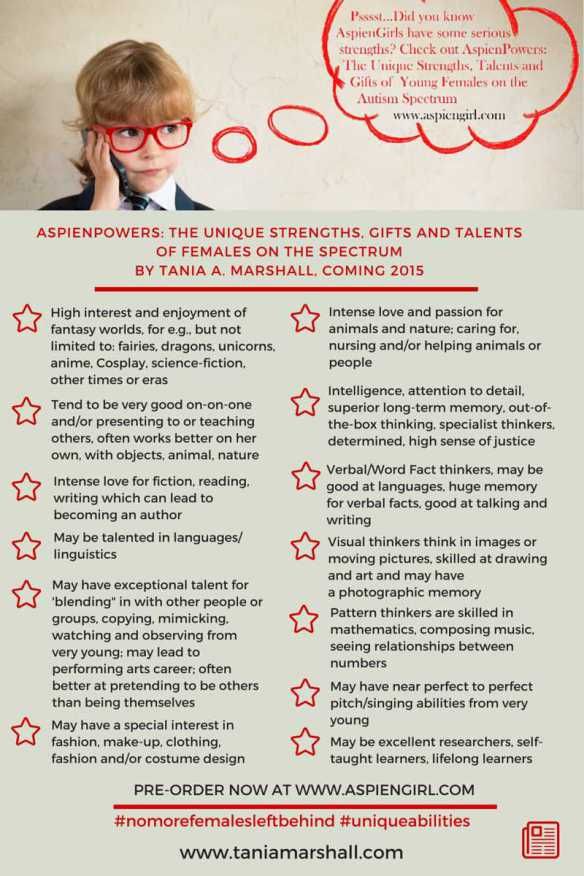 Instead, it seemed he could only manage to move those muscular parts to which he directed a conscious effort of will.’ (p. 57). Asperger continues: ‘His handwriting, as would be expected from his general clumsiness, was very poor. He carried on writing carelessly, and messily, crossing out words, lines going up and down, the slant changing. His spelling, however, was reasonably accurate. As long as his attention was focused on one word, he knew how to spell it. It was very significant then that he made more spelling errors when copying that at dictation. Really, one would expect that copying should not present any problems at all since the words were in front of him; but this very simple and straightforward task simply did not interest him’.
Instead, it seemed he could only manage to move those muscular parts to which he directed a conscious effort of will.’ (p. 57). Asperger continues: ‘His handwriting, as would be expected from his general clumsiness, was very poor. He carried on writing carelessly, and messily, crossing out words, lines going up and down, the slant changing. His spelling, however, was reasonably accurate. As long as his attention was focused on one word, he knew how to spell it. It was very significant then that he made more spelling errors when copying that at dictation. Really, one would expect that copying should not present any problems at all since the words were in front of him; but this very simple and straightforward task simply did not interest him’.
Of Ernst K, Asperger notes: ‘His most blatant failure was in writing … this motorically clumsy child had atrocious handwriting … The pen did not obey him, it stuck and sputtered; he corrected without concern for appearance and would simply write new letters on top of old ones’.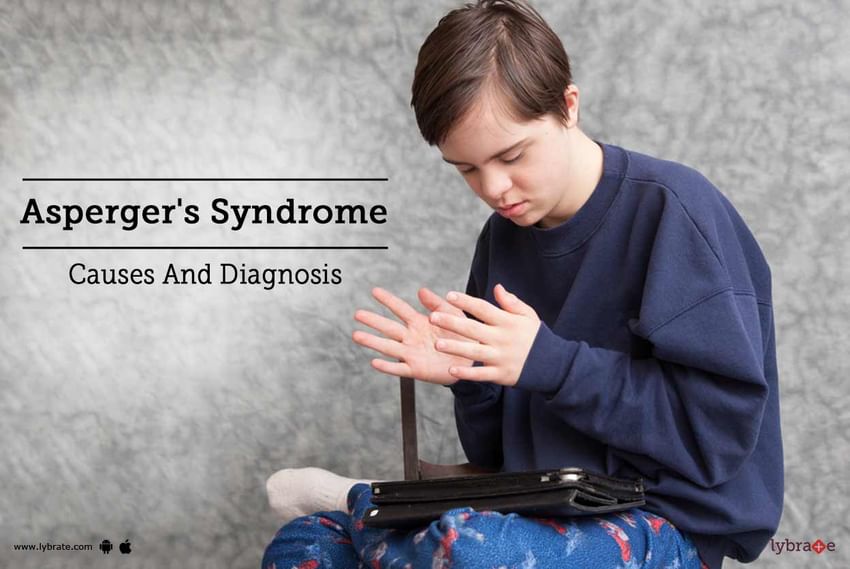
Finally, of Hellmuth, L. Asperger writes: ‘… he was clumsy to an extraordinary degree … he stood in the middle of a group of playing children like a frozen giant. He could not possibly catch a ball however, easy one tried to make it for him … he was said to have been clumsy in all practical matters from infancy’.
Since the English-speaking world was introduced to Asperger’s work by Wing in 1981, many additional studies have been published which underline the importance of motor aspects. For example, ill-coordinated movements and odd posture are noted in research studies by Burgoyne and Wing, 1983; Gillberg, 1989; Manjiviona and Prior, 1995; Klin et al, 1995. Many of these comment on handwriting as a special problem.
In this short article, our objective is to provide concrete evidence of the handwriting problems experienced by children who have been properly diagnosed by very experienced paediatricians and psychiatrists as having Asperger’s Syndrome.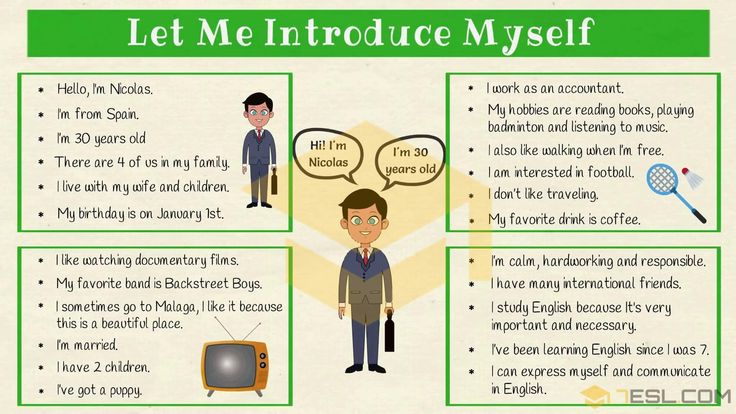 We present two contrasting case studies of children who currently attend mainstream schools in the UK. Rather unusually one of these children is a girl (current estimates of the ratio of boys to girls with AS is 4:1). So that the handwriting difficulties of the two children can be compared, we provide examples of their performance on a test called the Evaluation Tool of Children’s Handwriting (ETCH, Amundson, 1995). This is an American test, which one of us (DG) has found very useful in clinical practice and which we feel provides quite good information on different dimensions of a child’s handwriting problems. For those not familiar with the content of the test, each child performs 7 tasks as follows:
We present two contrasting case studies of children who currently attend mainstream schools in the UK. Rather unusually one of these children is a girl (current estimates of the ratio of boys to girls with AS is 4:1). So that the handwriting difficulties of the two children can be compared, we provide examples of their performance on a test called the Evaluation Tool of Children’s Handwriting (ETCH, Amundson, 1995). This is an American test, which one of us (DG) has found very useful in clinical practice and which we feel provides quite good information on different dimensions of a child’s handwriting problems. For those not familiar with the content of the test, each child performs 7 tasks as follows:
- Writing the alphabet from memory in lower case then in upper case. The child is instructed not to join the letters together and erasing or striking out is only permitted once.
- Writing the numerals from 1–20 under the same conditions.
- Near-point copying. The child is shown the sentence “Spaceships quickly orbited the moon” and is required to copy it from a sample placed on the desk surface beside them.

- Far-point copying. The child is required to copy the sentence “Sixty cows jumped and gazed at them” from a distance of 6–8 feet raised 4 feet from the floor.
- Manuscript to cursive transition. The child is shown the sentence “Astronauts waved to sixty cows below” in print form and is required to write it in joined up writing.
- Four non-words are dictated to the child and he/she is required to write them from memory – boizt, clagy, shrum and 58273.
- The child is asked to write a sentence containing no less than five words.
All tasks are timed but the child is NOT instructed to write as fast as possible (see manual for full details). Unfortunately, proper norms are not yet available for this test so age-related statements cannot be made. However, as most teachers and therapists will be aware, the derivation of age norms for a complex, taught skill like handwriting is fraught with difficulties and such information would have to be interpreted with great caution.
Case A
Background information
Mark was born in April 1988 and is now 13. He is a very bright boy who has attended mainstream school since he started at the age of 5. In order to confirm the diagnosis of AS, Mark was recently assessed on a test known as the Autistic Diagnostic Inventory (ADI: Rutter, Lord and LeCouteur, 1995). The ADI comprises three sections. These are concerned with Social Reciprocity, Communication, and Special Interests. Mark’s scores placed him in the ‘impaired’ category on all three.
When tested by an educational psychologist on the British Ability Scales (BAS), Mark obtained a verbal IQ of 145 and a performance IQ of 124. Although he experiences some very real difficulties in school, he reads well and is good at science and history. He does have a Statement of Special Educational Needs and is supported by the Special Educational Needs Coordinator. He now has a laptop computer and this has improved his written work tremendously. However, as with so many children with movement difficulties, this was not an overnight answer to all of his problems and keyboarding skills took some time to acquire.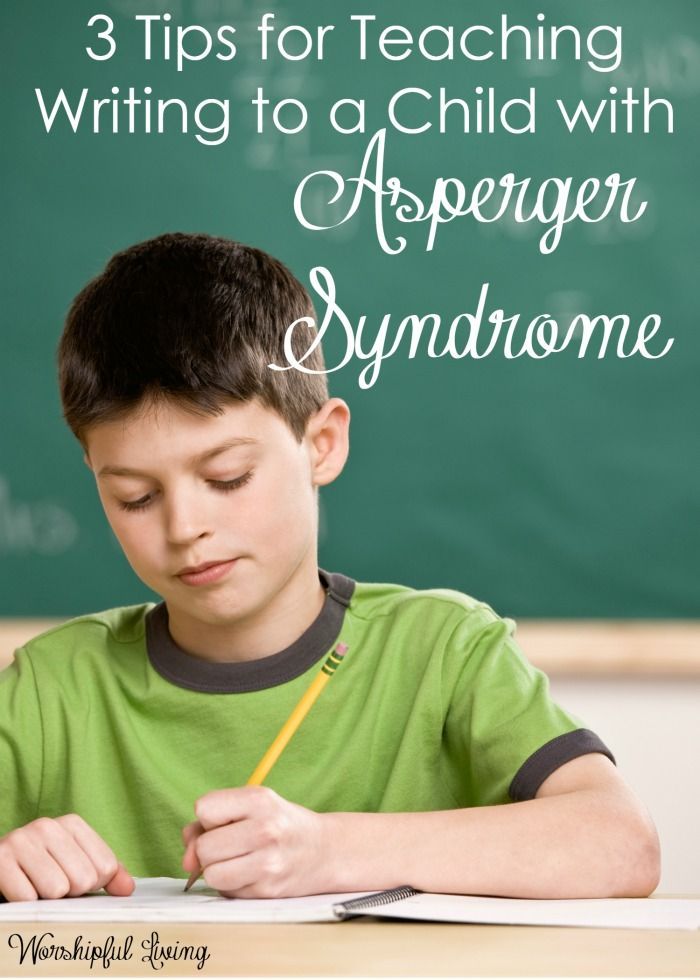
Motor difficulties
Like most other children with AS, Mark is not well coordinated and has great difficulty in learning new (and especially) complex motor skills. He does not like P.E in school and still has some difficulty riding a bicycle. Recently, Mark was assessed on the Bruininks-Oseretsky test (Bruininks, 1978). This a standardised test, published in the USA, which assesses gross and fine motor control as well as attributes such as strength and endurance. At the age of 12 years 11 months, Mark obtained scores on running speed and agility that indicated performance at a level of the average 5.5 year old. On the balance tests, his age-equivalent score was 7.5, on fine motor control, 6.2 and on the tasks involving ball skills, 6.11. Overall, therefore, Mark’s performance was well below that of his same-age peers. In her report, his therapist made special mention of his difficulties in executing a sequence of movements, as well as difficulty in learning things to a level where they could be performed fluently, without requiring constant monitoring and attention.
Mark’s Handwriting
Figures 1 and 2 show aspects of Mark’s performance on the ETCH test when he was 12 years 11 months. As most of our readers will agree, his difficulty with handwriting is very obvious. Surely we would expect a bright boy, nearly 13 years of age, to write more uniformly and legibly than this? A rough estimate of the legibility of his writing indicated that, overall, only 54% of his words were legible. However, this varied in an interesting way, from task to task. When the material was in front of him to copy, 80% of his letters were legible. When he had to generate his own sentence, however, letter legibility dropped to 50%. When the copying task required transformation of the material from print to cursive script, legibility fell even further – to 33%.
What about speed? Once again, the speed of Mark’s writing fluctuated from task to task but a rough estimate suggested an overall rate of about 38 letters per minute. This is significantly slower than one would expect for a boy of his age.
Case B
Background information
Molly was born in September 1992 and is now 9 years old. Like Mark, Molly is a very bright child. She showed signs of AS from a very early age. In particular, she had obsessions about the colour of her clothing, all of which had to be a special colour on particular days. As time passed, other symptoms emerged and Molly was given a diagnosis of AS at the age of 5. At this time, she was also referred to occupational therapy following concerns about her coordination and her ability to organise herself at home or at school coordination. Although she had difficulty in school from the beginning and has required extra assistance, she has managed to remain in a mainstream school.
When tested by an educational psychologist on the Weschler Scales (WISC IIIR) at the age of nine, Molly was reported to be at the 97th percentile on the verbal scales and above the 81st percentile on the performance scales (this means that on verbal ability, for example, her score was equal to or better than 97% of children of the same age).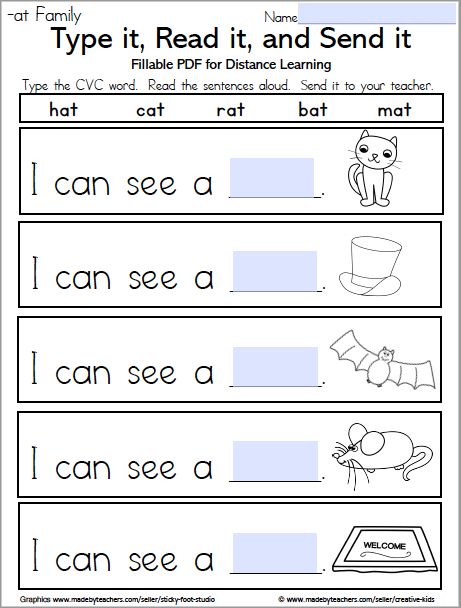 The psychologist noted that she was advanced in her verbal reasoning skills and in social comprehension (a very surprising result given her autistic tendencies). On the practical tasks, in the performance section of the test, she did well when she could talk her way through the task and develop an overall strategy for performance. However, when she had to modify strategies as the task became more complex, she ran into difficulties. At school, Molly’s teacher was pleased with her academic progress. She confirmed that she had good long term memory and retained information well. She was described as good at mathematical investigations. The only area of concern was her handwriting.
The psychologist noted that she was advanced in her verbal reasoning skills and in social comprehension (a very surprising result given her autistic tendencies). On the practical tasks, in the performance section of the test, she did well when she could talk her way through the task and develop an overall strategy for performance. However, when she had to modify strategies as the task became more complex, she ran into difficulties. At school, Molly’s teacher was pleased with her academic progress. She confirmed that she had good long term memory and retained information well. She was described as good at mathematical investigations. The only area of concern was her handwriting.
Motor competence
Molly’s general motor competence proved quite different from that of Mark. Over the years, she has been tested on several tests, each devoted to different aspects of perceptuo-motor control and development. Yet, on all of these she scored rather well. At the age of 5, she was assessed on a test called the SIPT (Ayres, 1989). This is intended to assess the child’s visual and kinaesthetic perception, requiring them to complete tasks like finding a particular shape hidden among others or to recognize a shape by touch. It also assesses the ability to perform actions to command (e.g. put one hand on your foot and one hand on your head), to copy designs, and to copy facial movements. Balance is measured in various ways and other gross motor tasks are included. Although Molly had minor difficulties with some of these tasks and her therapist was slightly concerned about some aspects of her perceptuo-motor development, overall her scores fell within the normal range.
This is intended to assess the child’s visual and kinaesthetic perception, requiring them to complete tasks like finding a particular shape hidden among others or to recognize a shape by touch. It also assesses the ability to perform actions to command (e.g. put one hand on your foot and one hand on your head), to copy designs, and to copy facial movements. Balance is measured in various ways and other gross motor tasks are included. Although Molly had minor difficulties with some of these tasks and her therapist was slightly concerned about some aspects of her perceptuo-motor development, overall her scores fell within the normal range.
At the age of 7.5, Molly was tested on the Bruininks-Oseretsky. Unlike Mark, she obtained scores on this test that were considerably above her age level. When required to run at speed, she obtained an age-equivalent score of 8.8. On the tasks involving manual dexterity and upper limb control, her age equivalent score was 9.11. Overall, therefore, on motor tests which did not resemble handwriting, she seemed rather well coordinated.
Molly’s handwriting
Figures 1 and 3 show examples of Mollys handwriting. Many aspects of her writing were striking, especially the variability exhibited in the free writing tasks shown in figure 3. From the ETCH test, we can see that Molly is uncertain about the formation of a number of letters, although sometimes it would seem that the problem has arisen because she has joined up all the lower case letters of the alphabet in spite of being asked not to. She seems shaky on a few of the capitals, too. In terms of legibility, overall only 53% of her words were legible and 74% of her letters. She was only able to produce between 16 and 25 letters per minute, depending on the task, a speed far below what would be expected of a child her age. In the testing situation, Molly’s difficulties reduced her motivation and her cooperation to such an extent that she actually refused to complete some of the tasks on the ETCH. In addition, it was very difficult indeed to get her to produce any free writing for us – so the example shown in figure 3 must speak for itself.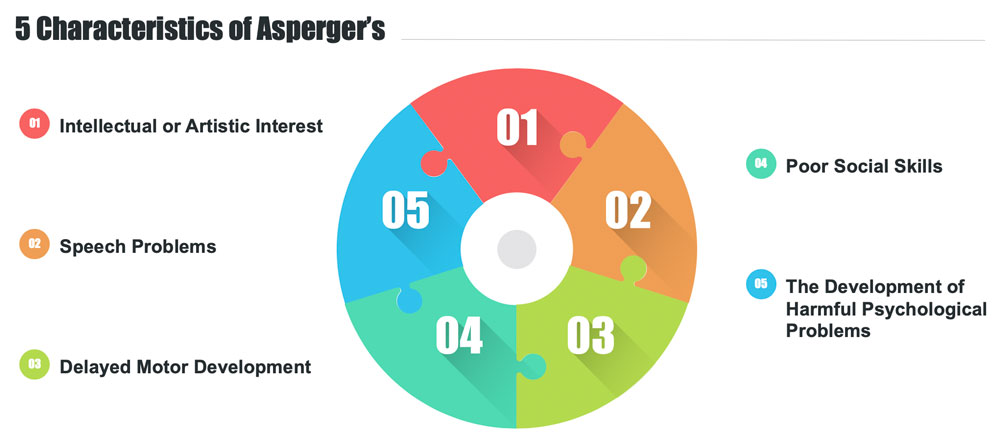
Conclusions
Handwriting is a complex skill involving a wide range of cognitive, linguistic, perceptual and motor abilities. It is a skill that children rarely acquire spontaneously. Even with expert tuition, it usually takes some time to perfect. As the child progresses through school the requirement to write legibly and fluently, at speed, increases considerably and the cost of being unable to do so also increases. At secondary school, children are obliged to write almost constantly, taking notes to dictation, writing essays, and copying down the homework required for the next day. For the child who has learned to form letters without apparent deliberation or effort, such tasks are straightforward. In contrast, for the child who is still struggling with the basic elements of the skill then even copying down homework may present a problem.
These two case studies illustrate the very significant difficulties with handwriting that children with AS may experience. Although Asperger commented on the incidence of the problem among the children he studied, there has been no subsequent systematic research that further illuminates the problem.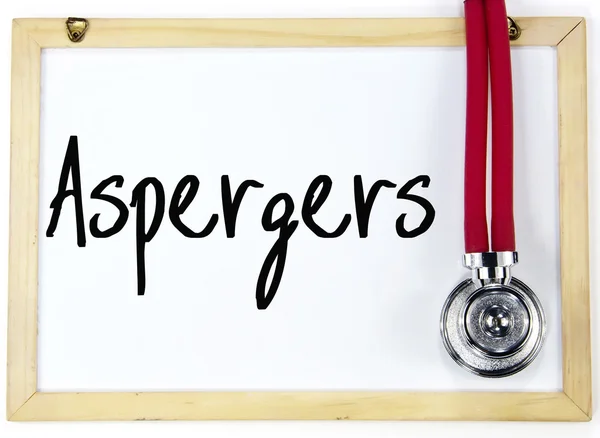
The difficulties involved in generating a satisfactory explanation of the defective handwriting of children with AS is (dare we say) graphically illustrated by the two children we have described. Both are highly intelligent and verbally fluent. Both did very well on the verbal components of the IQ tests and less well, but still considerably better than average, on the performance components. Both read very well and neither seemed to have general problems with visual pattern recognition. Taken together, these strengths might seem to suggest that neither child should have problems learning the rules of handwriting. For example, knowing that the body of all letters should sit on the line or knowing that word boundaries are marked by a letter space in English script would not be expected to cause special difficulties for these children. If the children’s general cognitive abilities allow us to exclude such difficulties, where else might the problem with handwriting reside? The two remaining domains of explanation would seem to be defective motor control or defective motivation.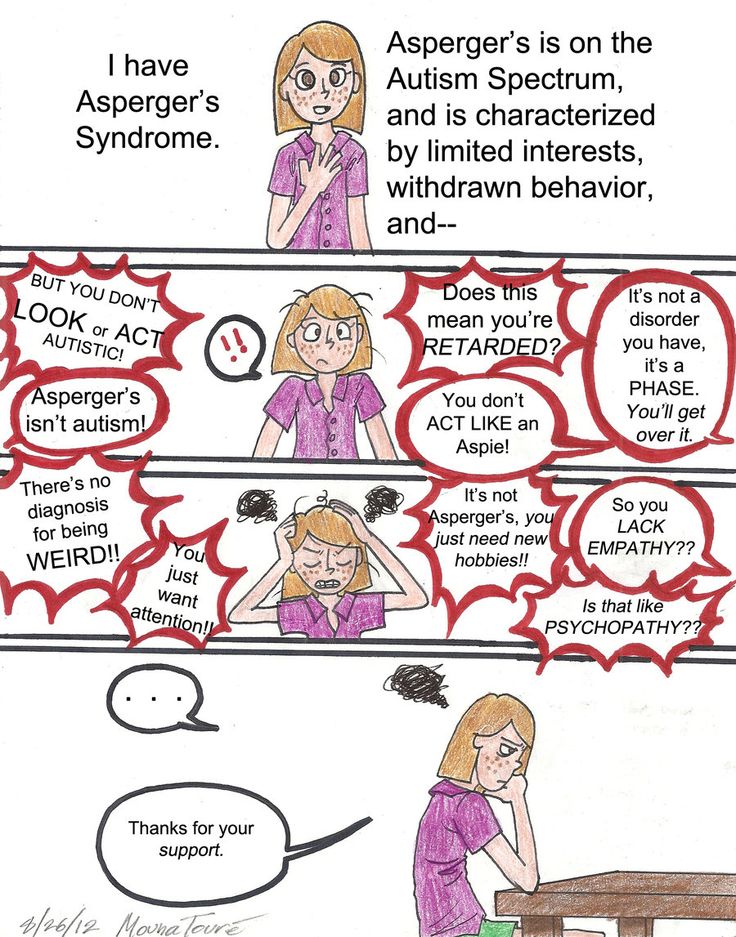
Might it simply be that the children cannot control their hands and fingers adequately, for example repeatedly generating the calibrated force required to produce a series of shapes of a the same size? Certainly both children had difficulty in maintaining consistent size and slope when writing. However, here we are confronted with a fundamental difficulty posed by our data. Quite simply, it is that one child appears to be generally ‘clumsy’, while the other does not. More specifically, one has balance difficulties that might in turn, lead to poor sitting posture, the other has not. The same child has generalised fine motor difficulties and cannot cut with scissors, use a ruler, etc., but, again, the other does not. Had they both been poorly coordinated then we might have been satisfied with the explanation that handwriting is just another movement skill, like catching a ball or cutting with scissors, which such children find hard to learn. In sum, whereas a fine motor control defect evident in the execution of writing seems to offer a plausible account of Mark’s difficulties, it seems flatly inconsistent with Molly’s apparent competence in a broad range of motor tasks outside of the domain of handwriting.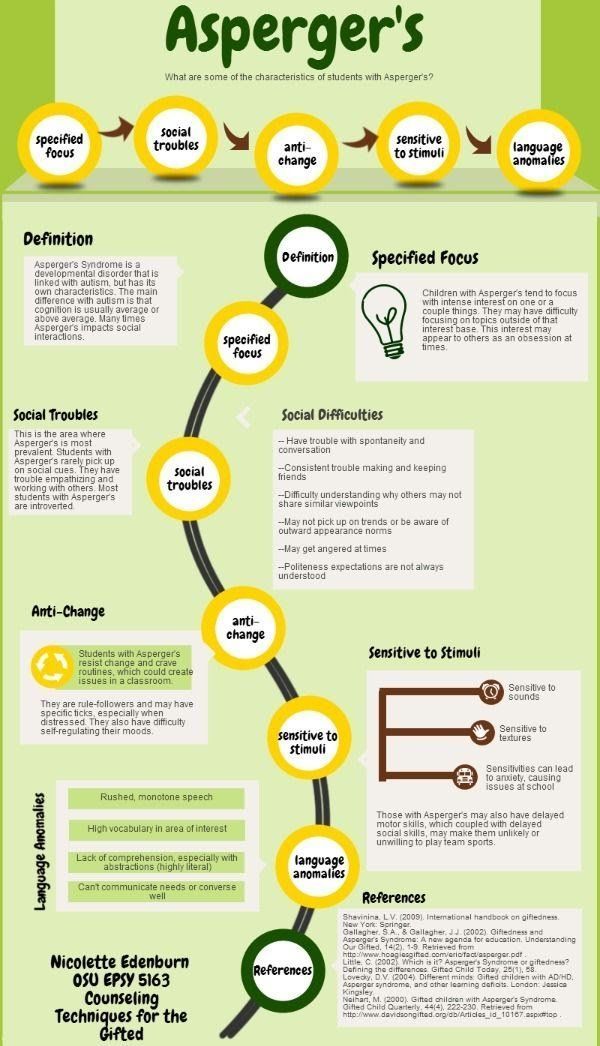 Could it be that handwriting is a much more complex task than any contained in tests like the Bruininks-Oseretsky, and that Molly’s difficulties only become evident when task difficulty lies close to that found in handwriting. We might argue that the sequences of movements required to form letters and the timing required to join them fluently is so demanding that it uncovers difficulties in children who otherwise seem quite well coordinated. The trouble with this hypothesis is that it is blatantly post hoc and will remain so until we can find another task with the type and level of difficulty that we believe characterises handwriting and show that it causes Molly peculiar difficulty. This possibility provides a salutary reminder that in the solution of this problem, an advance in our understanding of handwriting skills may be at least as important as a better understanding of Asperger’s Syndrome.
Could it be that handwriting is a much more complex task than any contained in tests like the Bruininks-Oseretsky, and that Molly’s difficulties only become evident when task difficulty lies close to that found in handwriting. We might argue that the sequences of movements required to form letters and the timing required to join them fluently is so demanding that it uncovers difficulties in children who otherwise seem quite well coordinated. The trouble with this hypothesis is that it is blatantly post hoc and will remain so until we can find another task with the type and level of difficulty that we believe characterises handwriting and show that it causes Molly peculiar difficulty. This possibility provides a salutary reminder that in the solution of this problem, an advance in our understanding of handwriting skills may be at least as important as a better understanding of Asperger’s Syndrome.
Finally, there is always the possibility that the lack of interest in communicative skills that might be said to be a central characteristic of children with AS, may result in reduced motivation to acquire writing skills.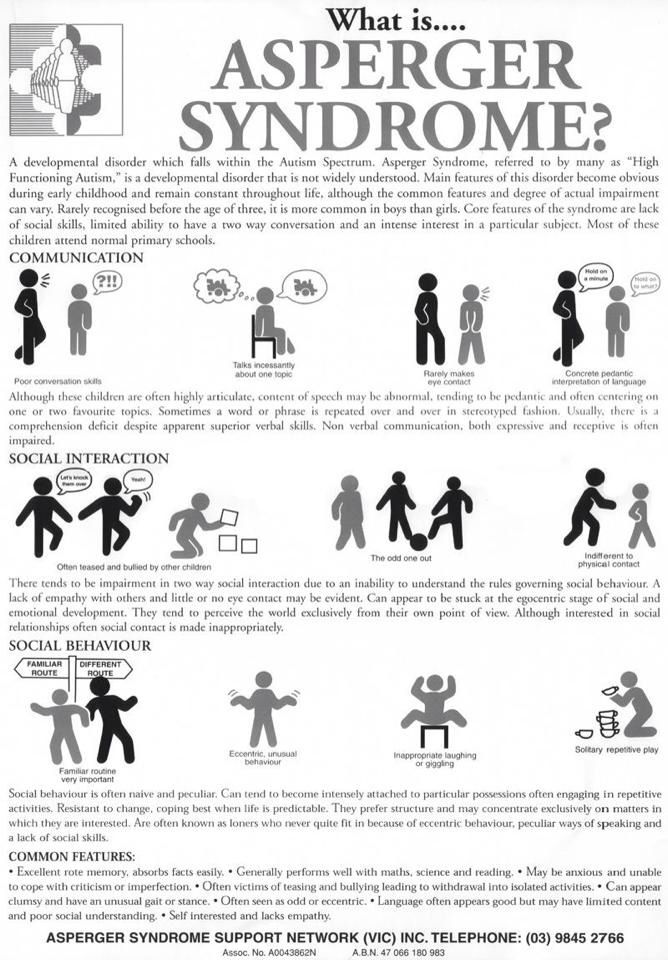 However, that leaves unexplained the broad range of Mark’s motor incompetence, which is arguably more typical than Molly’s surprising competence.
However, that leaves unexplained the broad range of Mark’s motor incompetence, which is arguably more typical than Molly’s surprising competence.
Whatever the final answer, parents and teachers working with these children should ensure careful assessment of handwriting is undertaken as it cannot be assumed that even the most ‘gifted’ of these children will automatically acquire competence in this area. Obviously, consideration should also be given to early substitution of keyboarding skills. Many professionals in the field find that children with AS benefit greatly from being introduced to a computer early on in their school career.
References
- American Psychiatric Association. (1994). Diagnostic and Statistical Manual of Mental Disorders. Fourth Edition, (DSM-IV). Washington, DC: American Psychiatric Association.
- Amundson, S.J. (1995) The Evaluation Tool of Children’s Handwriting. Homer Alaska: OT Kids.
- Asperger, H. (1944) Die ‘Autistischen Psychopathen’ im Kindesalter (Autistic psychopathy in childhood).
 Archiv fur Psychiatrie und Nervenkrankheiten, 117, 76–136.
Archiv fur Psychiatrie und Nervenkrankheiten, 117, 76–136. - Asperger, H. (1944) Autistic Psychopathy in Children. Translated in U. Frith (1991) Autism and Asperger Syndrome. Cambridge: Cambridge University Press.
- Attwood, T. (1998). Asperger syndrome: A guide to parents and professionals. London: Jessica Kingsley.
- Ayres, A.J. (1989). Sensory Integration and Praxis Test Manual, 3rd Edition. Los Angeles: Western Psychological Services. Follet.
- Bruininks, R.H. (1978). The Bruininks-Oseretsky Test of Motor Proficiency. Circle Pines, MN: American Guidance Service.
- Burgoyne, E., & Wing, L. (1983). Identical triplets with Asperger’s Syndrome. Journal of Psychiatry, 143, 261–5.
- Frith, U. (1991). Autism and Asperger Syndrome. Cambridge: Cambridge University Press.
- Ghaziuddin, M., Tsai, L., & Ghaziuddin, N. (1992). Brief Report: A Reappraisal of Clumsiness as a Diagnostic Feature of Asperger Syndrome.
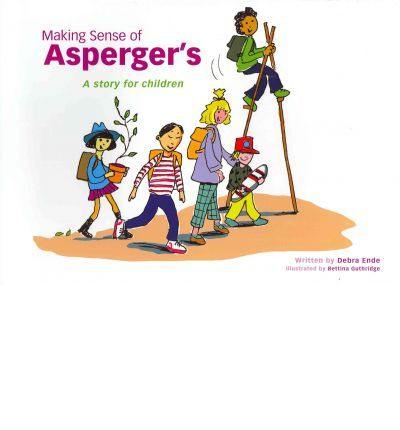 Journal of Autism and Developmental Disorders, 22, 651–656.
Journal of Autism and Developmental Disorders, 22, 651–656. - Ghaziuddin, M., Butler, E., Tsai, L., & Ghaziuddin, N. (1994). Is clumsiness a marker for Asperger’s Syndrome? Journal of Intellectual Disability Research, 38, 519–527.
- Gillberg, C. (1989). Asperger syndrome in 23 Swedish children. Developmental Medicine and Child Neurology, 31, 520–531.
- Green, D. (1997). Clumsiness in Asperger’s Syndrome. Unpublished Master’s Thesis: University of Surrey.
- Howlin, P. (2000). Assessment Instruments for Asperger Syndrome. Journal of Child Psychology and Psychiatry Review, 5, 120–129.
- Klin. A., Volkmar, F., Sparrow, S.S., Cicchetti, D.V., & Rourke, B.P. (1995). Validity and Neuropsychological Characterization of Asperger Syndrome: Convergence with Nonverbal Learning Disabilities Syndrome. Journal of Child Psychology and Psychiatry, 36, 1127–1139.
- Lord, C., Rutter, M., Goode, S., Heemsbergen, J., Jordan, H, Mawhood, L.
 , & Schopler, E. (1989) Autism Diagnostic Observation Schedule: A standardised observation of Communicative and social behaviour. Journal of Autism and Developmental Disorders, 19, 185–212.
, & Schopler, E. (1989) Autism Diagnostic Observation Schedule: A standardised observation of Communicative and social behaviour. Journal of Autism and Developmental Disorders, 19, 185–212. - Lord, C., Rutter, M., & Le Couteur, A. (1994). Autism Diagnostic Interview-Revised: A revised version of a diagnostic interview for caregivers of individuals with possible pervasive developmental disorders. Journal of Autism and Developmental Disorders, 24, 659–685.
- Manjiviona, J. & Prior, M. (1995). Comparison of Asperger Syndrome and High Functioning Autistic Children on a Test of Motor Impairment. Journal of Autism and Developmental Disorders, 25, 23–41.
- Wechsler, D. (1992). Wechsler Intelligence Scale for Children-Revised. New York: The Psychological Corporation.
- Wing, L. (1981) Asperger’s syndrome: A clinical account. Psychological Medicine, 11, 115–129.
- World Health Organization (1992). The ICD-10 Classification of mental and behavioural Disorders.
 Clinical Descriptions and Diagnostic Guidelines. Geneva: WHO.
Clinical Descriptions and Diagnostic Guidelines. Geneva: WHO.
Author’s Note
As we have pointed out in this article, children with Asperger’s Syndrome are a particularly challenging group to teach when it comes to handwriting. Some professionals feel that computers should be introduced very early on. Others feel that we should persevere with handwriting for a while. If YOU have a view on this, do please write to the editor of our journal so that experiences can be shared. Equally, if there is anything that you as a teacher or therapist find particularly helpful for children with AS, please share it with us.
Writing When on the Autism Spectrum
Some autistic writers have poor working memory and can become overwhelmed trying to retain too many details at once. KELLY BRENNER 2016
If there is one response as a writer I dread more than a rejection to a pitch, it’s this one: “I’d be happy to talk to you. Why don’t you give me a call?”
When I hear the first few clarinet notes of Rhapsody in Blue, my phone’s ringtone, I’m gripped with anxiety.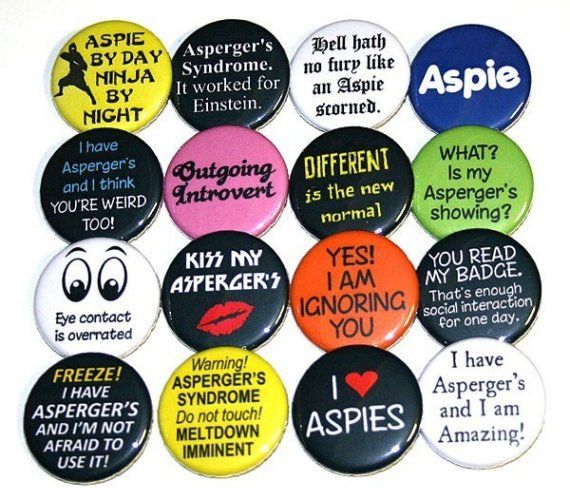 My first reaction is to hit mute. (Sorry, Gershwin.)
My first reaction is to hit mute. (Sorry, Gershwin.)
I have always had an aversion to talking on the phone, but I didn’t understand why—until earlier this year. In April, I found out that I am on the autism spectrum. The diagnosis explained why I have to mentally prepare myself before answering the phone and why, most of the time, I swipe “reject” instead.
Most neurotypical people don’t give a second thought about making—or taking—a phone call. But it can be a real problem for those of us on the spectrum. Many of us find social interactions uncomfortable, so we read lips and watch body movements to gather socially relevant cues. But on the phone, all that visual information is gone, and we may fall awkwardly silent or fill gaps with needless talk.
Understanding this has helped me prepare better for phone calls. But I’ve also begun to understand that I owe many of my strengths as a writer to my autism.
A common saying in the autism community goes: “If you’ve met one autistic person, you’ve met one autistic person.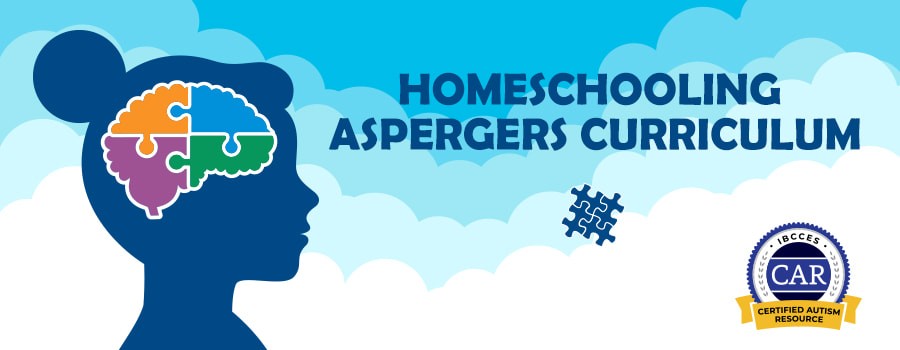 ” That is, we autistic people all vary in our traits. Some of these are problematic, but others can be beneficial. Because we observe and process the world differently, our writing can present unique perspectives. Autistic writers who learn to capitalize on the favorable traits and manage the more challenging ones can thrive in this profession.
” That is, we autistic people all vary in our traits. Some of these are problematic, but others can be beneficial. Because we observe and process the world differently, our writing can present unique perspectives. Autistic writers who learn to capitalize on the favorable traits and manage the more challenging ones can thrive in this profession.
Like most writers, I usually juggle multiple projects. Lately, I’ve been writing a book and freelance articles, and I’ve struggled to retain the details of so many different topics without feeling overwhelmed.
Since my diagnosis, I’ve learned that multitasking can be challenging, if not impossible, for people on the spectrum. We often have a hard time with working memory, the ability to keep ideas and thoughts organized on mental sticky notes long enough to process them. Those of us with poor working memory find our sticky notes quickly scattered, making it difficult to retain specifics and see the big picture.
Getting organized with calendars and reminders helps writers on the spectrum be productive and helps prevent getting overwhelmed.
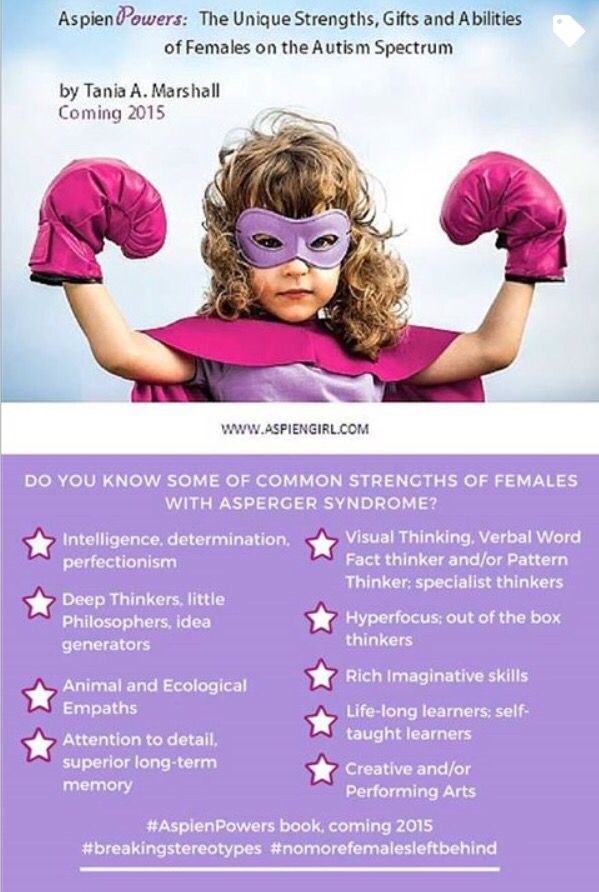 KELLY BRENNER 2017
KELLY BRENNER 2017
Sensory issues can also be problematic for writers on the spectrum. Noise, temperature, smells, or visual clutter, among others, can distract us. A leaf blower or loud music can halt my work, and I find myself unable to refocus until the sound ceases. And even then, starting again can be difficult.
People on the spectrum often have trouble with “stop and go.” Once we get going, we can work for hours, and have trouble stopping. But after stopping, we have a difficult time refocusing or changing gears. Samantha Craft, the author of Everyday Aspergers, says autistic inertia can leave her “unable to begin a writing task.” And Laura James, a freelance writer and author of Odd Girl Out: My Extraordinary Autistic Life, says her writing suffers when her routine goes awry. “On a good day I am super-efficient. On bad ones, hours can slip by while I try to get started,” she says.
Perhaps one of the biggest challenges facing autistic writers is “autistic burnout,” a term we use to describe what happens when we become overwhelmed and exhausted.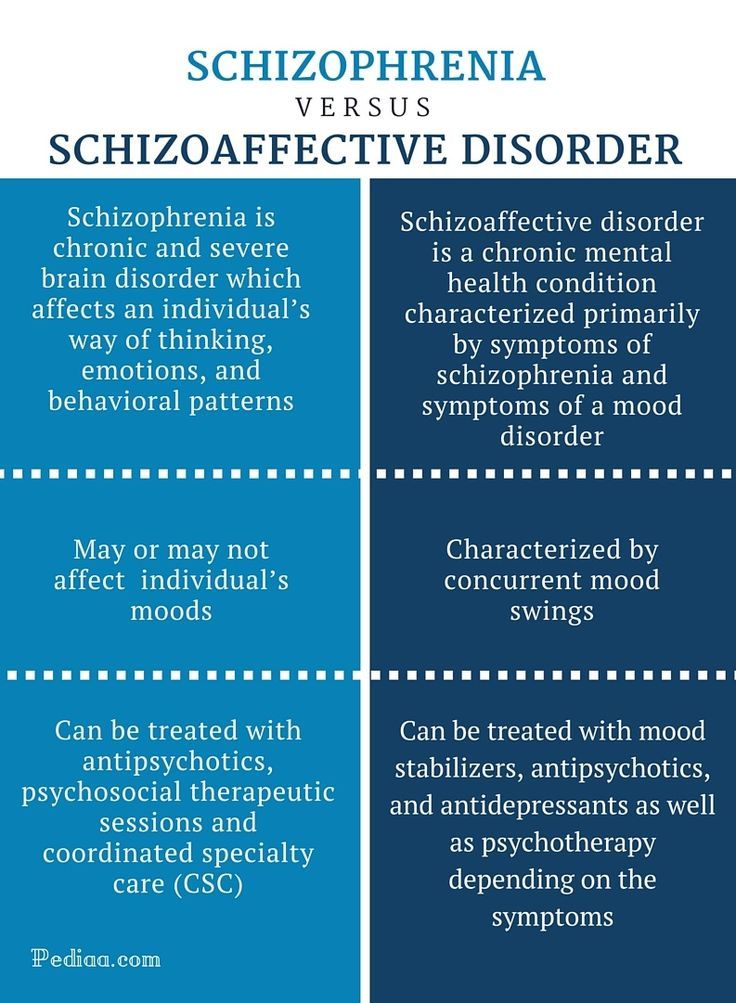 Neurotypicals suffer burnout too, of course, but autistic burnout comes from a different place. It develops from sensory overload, or the stress and anxiety that comes with trying to fit into a neurotypical world.
Neurotypicals suffer burnout too, of course, but autistic burnout comes from a different place. It develops from sensory overload, or the stress and anxiety that comes with trying to fit into a neurotypical world.
Those on the spectrum often “mask” when we’re in public to hide or minimize our autistic traits in order to appear “normal.” Seemingly simple tasks, such as phone calls and meetings, can leave us mentally, physically, and emotionally drained, and needing time to recover. This state can last from a few hours to days, or build up slowly and last weeks or even months.
“Even the smallest things can wear me out,” says Eric Garcia, a journalist at Roll Call, which covers the U.S. Congress and politics. “After a lot of taxing interviews, I am not only mentally, but physically exhausted.” Like computers on the edge of collapse, our minds and bodies go into “safe mode.”
But life as an autistic writer is not all bad: It also presents many benefits. We often have better long-term memory than most people.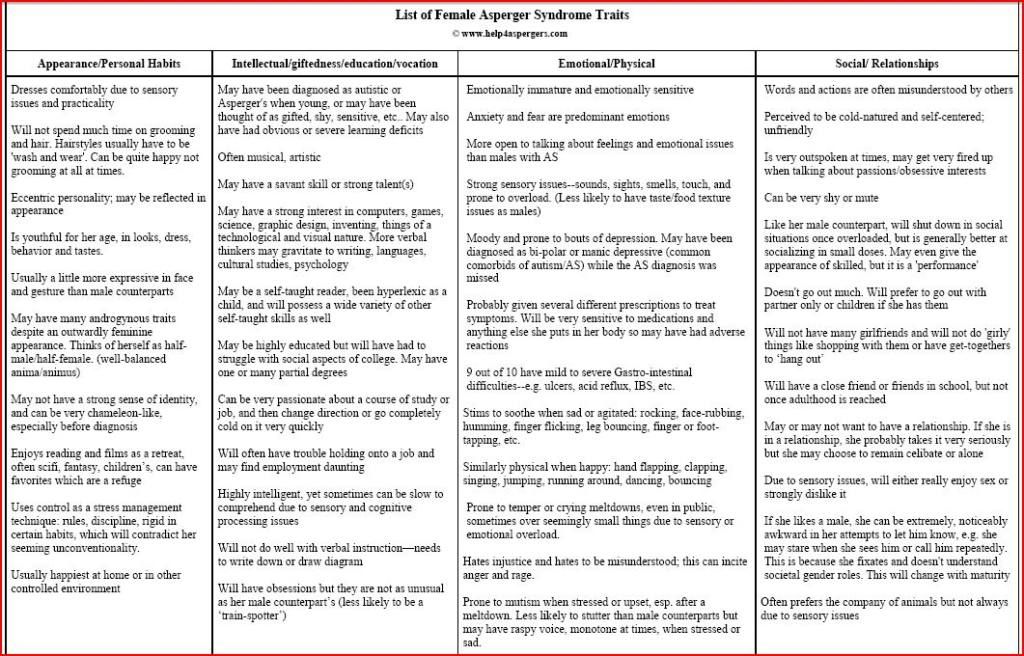 Garcia says this trait is helpful for reporters, who “have to retain a lot information both for the current piece you are writing, as well as for future stories.”
Garcia says this trait is helpful for reporters, who “have to retain a lot information both for the current piece you are writing, as well as for future stories.”
People on the spectrum are also often visual thinkers. In the book Thinking in Pictures, autistic author Temple Grandin, an expert on animal behavior, writes about visualizing “peace” as a dove and “jumping” as Olympic hurdles. Jennifer Malia, a writer and professor of English at Norfolk State University, also uses this form of picture thinking. She recalls key events from her life by replaying “video memories,” a trait that helped her write Too Sticky!: A Story of an Autistic Girl with Sensory Issues, a children’s book based partly on her experience living with autism.
Autistic people also tend to have an ability to zero in on their areas of interest. Many writers have a subject area they stick to or a beat they cover, but this is especially true for writers with autism. We often have the ability to hyper-focus and learn quickly and for long periods of time.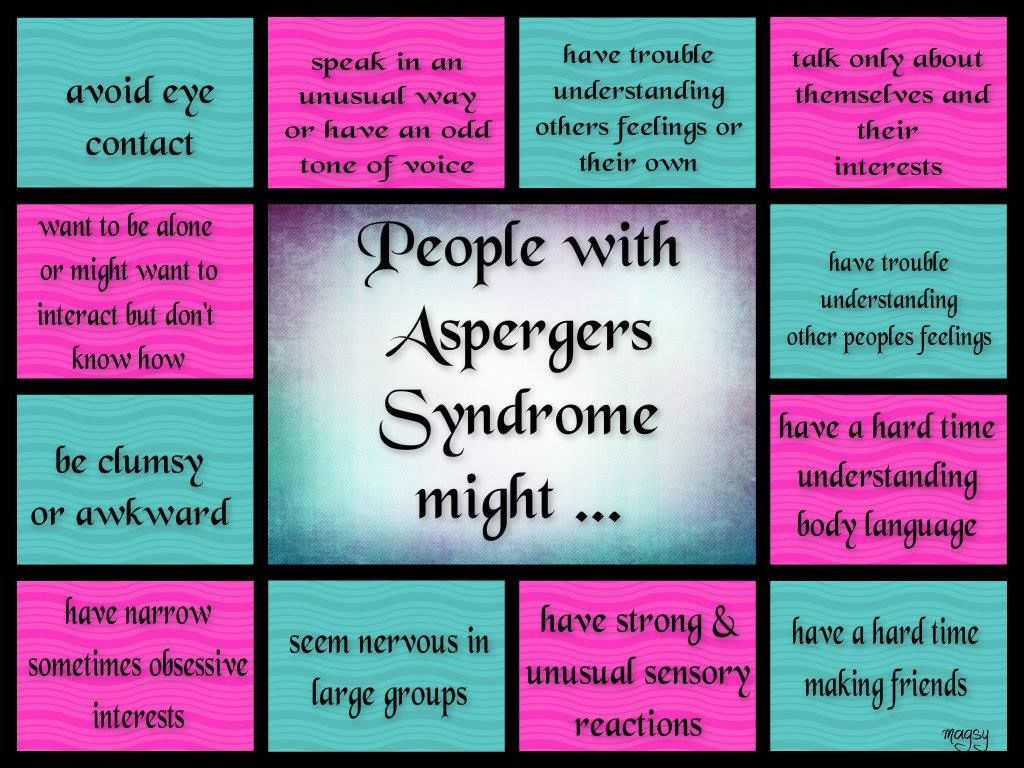 Garcia’s niche is politics and disability; mine is natural history, with a specialization in urban nature. I can spend an entire day researching niche topics such as barnacle predators before resurfacing.
Garcia’s niche is politics and disability; mine is natural history, with a specialization in urban nature. I can spend an entire day researching niche topics such as barnacle predators before resurfacing.
This year, I’ve learned that autism defines us, but our traits are part of the whole. “It’s a string of separate paragraphs stuck together,” Leonard Bernstein wrote in 1955 about Gershwin’s masterpiece Rhapsody in Blue. “You can cut parts of it without affecting the whole. You can remove any of these stuck-together sections and the piece still goes on as bravely as before…. And it’s still the Rhapsody in Blue.”
Yes, autistic traits are part of us, but we can learn to manage and even capitalize on them.
I still don’t love phone calls. But now, before making a call, I run through the conversation in my mind, then brace myself and dial.
Kelly Brenner Richard Butler
Kelly Brenner is a naturalist, writer, and photographer based in Seattle.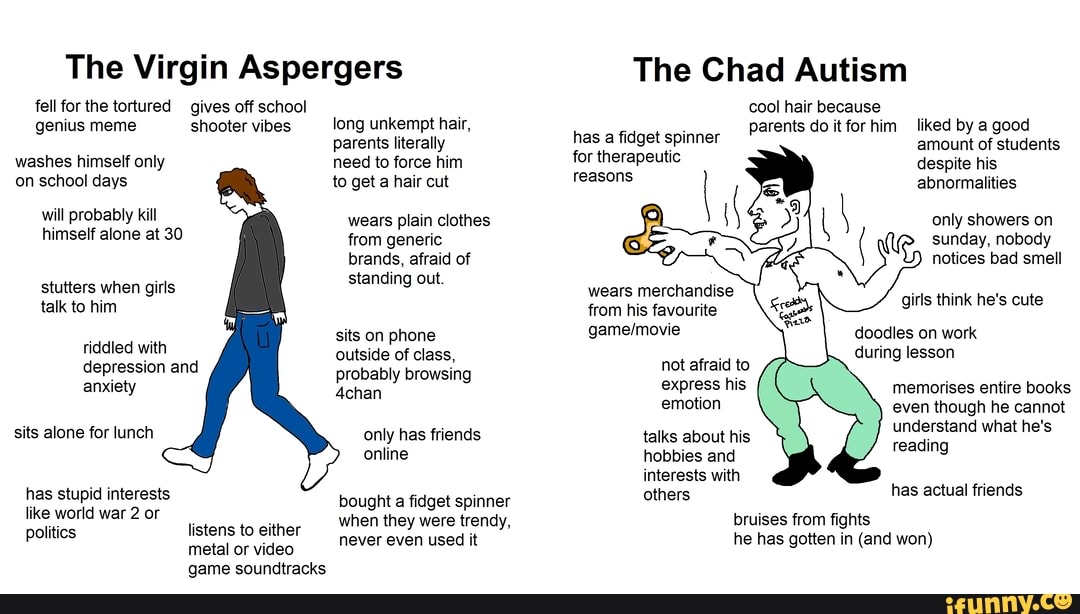 She founded The Metropolitan Field Guide in 2009 and has bylines in Crosscut, ParentMap, and National Wildlife Magazine. She is currently writing a book about urban nature, which will be published by Mountaineers Books in 2019. She’s written about her discovery of being autistic here. Follow her on Twitter @MetroFieldGuide.
She founded The Metropolitan Field Guide in 2009 and has bylines in Crosscut, ParentMap, and National Wildlife Magazine. She is currently writing a book about urban nature, which will be published by Mountaineers Books in 2019. She’s written about her discovery of being autistic here. Follow her on Twitter @MetroFieldGuide.
Children with autism write in large, jagged letters
08/07/13
Researchers have identified how motor problems in autism lead to writing difficulties
Author: Laura Geggel
Source: Simons Foundation
Calligraphers have a special writing style, and apparently so do people with autism. A new study, published June 28 in the journal Research in Developmental Disabilities, shows that children with autism prefer to write in very large, wide letters, which may indicate difficulty with fine motor skills.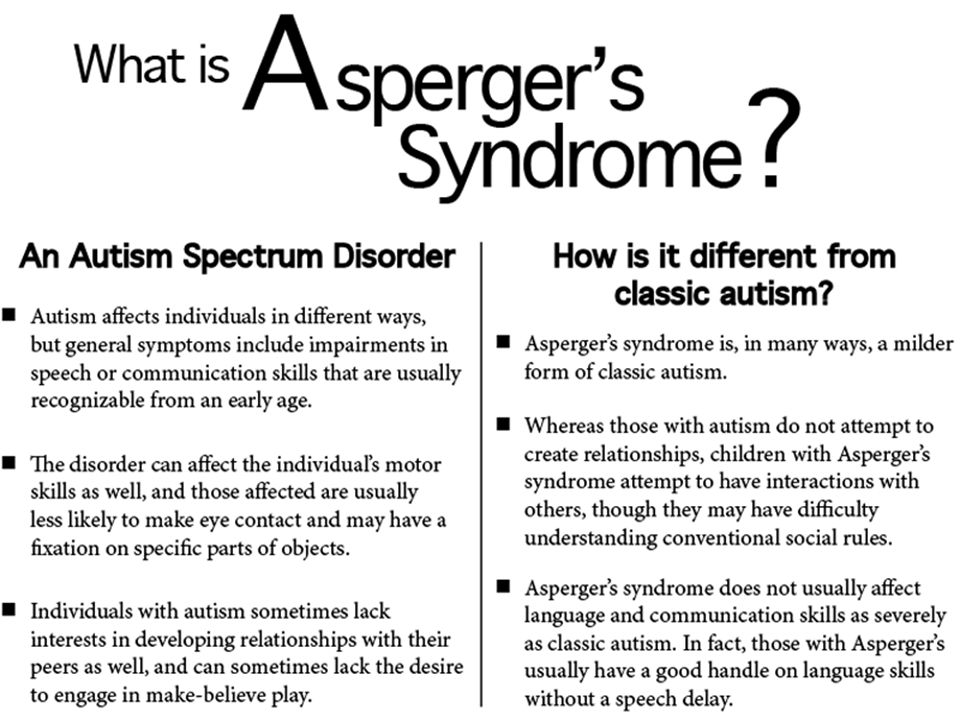 nine0003
nine0003
In the process of writing, the slope and size of the letters in the handwriting of these children change all the time. Perhaps this is due to the fact that they write faster than their peers and spend more energy on it.
About 80% of children with autism have problems with gross motor skills such as running or throwing a ball. Many of them also have difficulty with tasks that require the use of fine motor skills, such as carving with scissors or legible writing, a complex skill that requires simultaneous work of visual perception, motor skills and memory. nine0003
Large handwriting or macrography is not limited to people with autism. Adults with cerebellar damage or Parkinson's and Huntington's disease (disorders that affect the parts of the brain responsible for planning movements) also write in capital letters.
In a new study, 26 children with high-functioning autism and 17 controls, ages 8 to 13, were asked to write a small English "l" ("l") four times on a tablet screen. nine0003
nine0003
They found that the letters "l" written by children with autism were, on average, 1 centimeter taller and 4 centimeters wider than those written by the control group. Children with autism also had difficulty catching and throwing balls and performed poorly on tests of dexterity and balance.
These results suggest that macrography is related to motor skill problems and hand-eye coordination difficulties rather than age or intelligence, which is supported by previous studies. nine0003
Children with autism also made more noise when writing than controls, indicating greater energy expenditure for muscle movement in the fingers and wrists.
Researchers mention two ways that help improve handwriting in children with autism: showing a visual writing pattern and correcting posture.
Comment by Lyubov Nikolaevna Enenkova, defectologist, specialist in sensory integration, expert of the Exit Foundation:
This problem is not so much related to fine motor skills, but to the distribution of muscle tone and proprioception.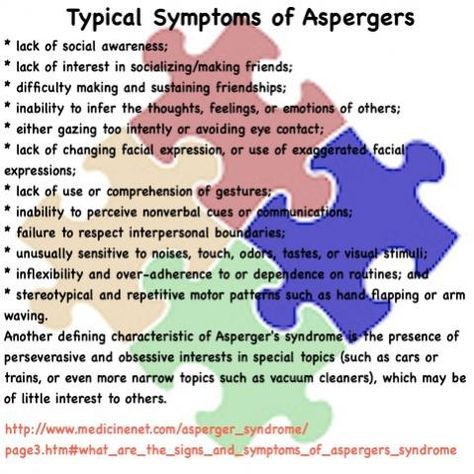 Fine motor skills in this case are holding a pen or pencil, and the fact that children spend more energy on writing is precisely the problem of muscle tone distribution. It is easier to write in large letters - you don’t have to strain so much about hand-eye coordination (getting into the line). In addition, the movement of the whole arm from the shoulder (as children with sensory processing disorders most often write) suggests large writing. nine0047
Fine motor skills in this case are holding a pen or pencil, and the fact that children spend more energy on writing is precisely the problem of muscle tone distribution. It is easier to write in large letters - you don’t have to strain so much about hand-eye coordination (getting into the line). In addition, the movement of the whole arm from the shoulder (as children with sensory processing disorders most often write) suggests large writing. nine0047
Here you can also talk about visual-motor memory when you learn a letter and write it in the air. It is clear that it is huge in the air, but the motor pattern remains in the brain, and if you do not then train the skill in a lined space, then the handwriting can jump like that. It is not for nothing that in the USSR there were several types of lined notebooks, not counting the cells. And each line was given at a certain stage in the development of writing. Now freemen have come - we write on a tablet, on a blackboard, in an album - there is no ruler there.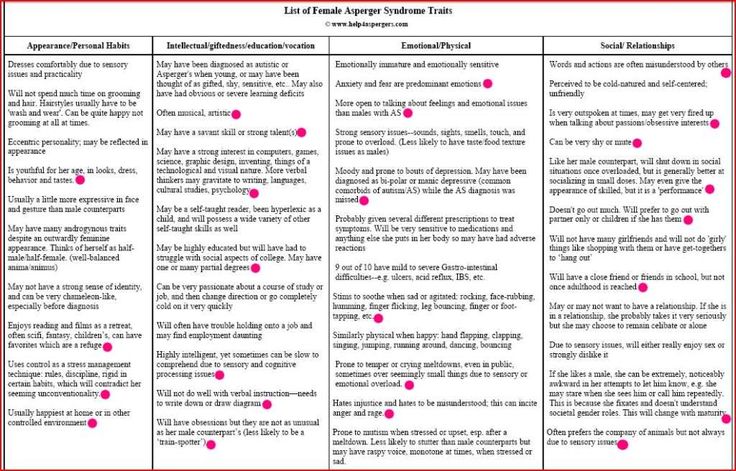 In Waldorian schools, the landscape sheet is lined, but they adhere to the rule algorithm from wide to a decrease in the width of the strip. nine0047
In Waldorian schools, the landscape sheet is lined, but they adhere to the rule algorithm from wide to a decrease in the width of the strip. nine0047
"demonstration of a visual sample" can mean both a copybook sample and a sample of the motor act of writing, how and where to move the hand. But for people with autism, in my opinion, this does not work. They still take the letter as a symbol and copy it in a gestalt, that is, in its entirety, and not in parts. It is the entire letter that is given in foreign spellings, and on it the directions for writing are marked with arrows.
Thanks to Tamara Solomatina for the translation. nine0003
Scientific research, sensory and motor skills of writing and writing skills: first steps
04.03.18
How to start learning a letter with a child who does not even look at the paper
Source: Autism Speaks
9000
Our son is 4 years old and has autism.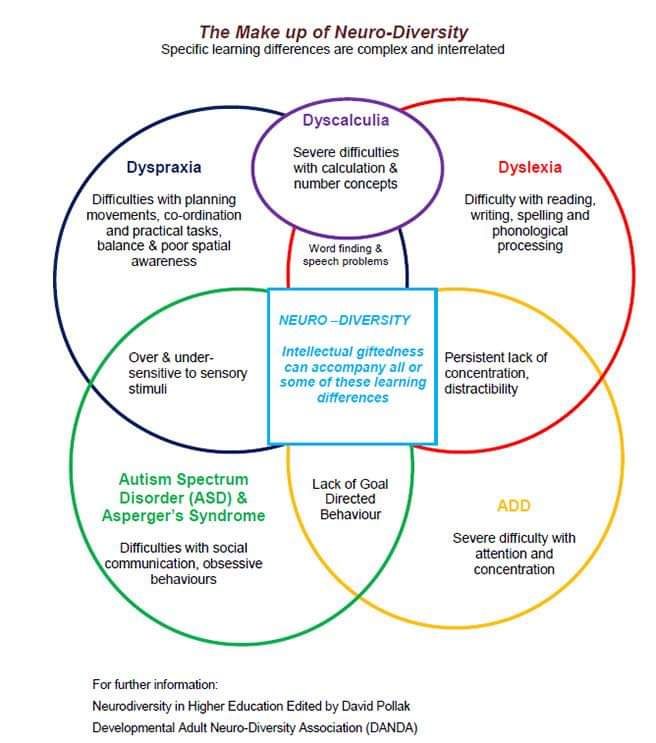 How can we help him learn to write if he doesn't even look at the paper?
How can we help him learn to write if he doesn't even look at the paper?
Answered by occupational therapist Desiree Gapultos, who works at Children's Hospital Los Angeles. nine0047
Thank you for your question. You rightly noticed that visual attention is one of the basic skills that are necessary for writing. Other skills essential for learning to write include visual-motor integration (hand-eye coordination) and fine motor skills. The child must realize that it is possible to purposefully create marks and shapes on the surface (and not just "doodle").
I'm happy to offer you some ideas based on my experience with young children on the autism spectrum. However, first I must emphasize that 4 years is too early to learn how to write letters. This also applies to children without autism. Instead, it is better to focus on the skills that will form the basis of writing letters in the future, including the ability to copy simple shapes and trace lines and some letters.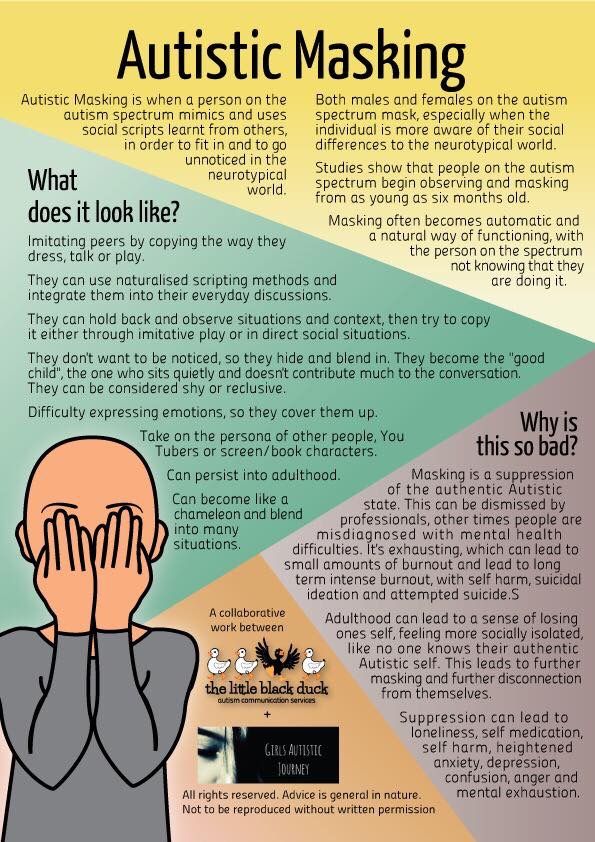 nine0003
nine0003
Let's start with the problem you mention - how to teach your son to follow the letter on paper. I usually recommend using the child's interests to get their attention. For example, is he interested in cars? Draw a car on paper and show it to him. Draw circles and say that these are the wheels of the car, and so on. Here are some ideas for developing writing skills:
Getting your child's attention
- Hang a large sheet of paper or drawing paper, a chalkboard, or a whiteboard for markers on the wall. They should hang at the level of the child's eyes. Then give your child some colored markers or crayons and show them how fun it is to draw something on that surface. (In my experience, some children on the autism spectrum can do this easier when they are standing.) nine0003
- Buy a set of colorful crayons and show your son how to draw on the pavement while walking.
Preliminary Writing Skills
When you find a surface that can grab your son's attention, I recommend that you practice your pre-writing skills in a playful way before moving on to writing letters.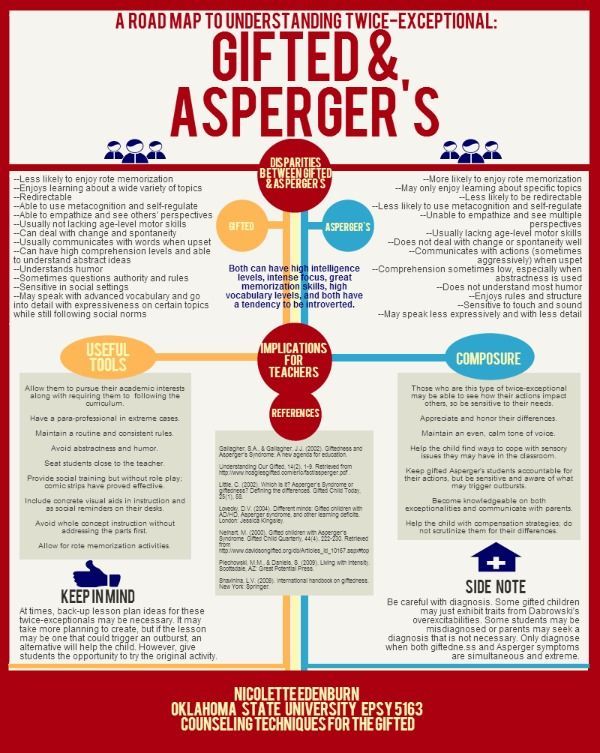
- Use bright colored crayons, felt-tip pens or crayons to show your child how to draw simple shapes - circles, zigzags or "X". Encourage him to repeat after you or trace your shapes. Or you can copy what it draws. If he made a mark on the paper, praise him and make the exact same mark next to him. Help the child draw the circle, then add the eyes, nose and mouth so that together you draw the face. nine0003
- Show your son how to trace his own hand on the pavement or paper on the wall. You can trace your own hand first, and then use a very gentle “hand on hand” prompt to help him trace his hand. In my experience, many children enjoy the sensory aspects of this exercise, and it also encourages visual attention and interest in writing tools.
- Show your son how to draw shapes in the sand with your finger or how to extrude shapes in plasticine or clay with a stick. Try to find material that the child will like according to the sensory experience. By the way, if a child can “feel” letters or shapes, it will be easier for him to remember how to write them in the future.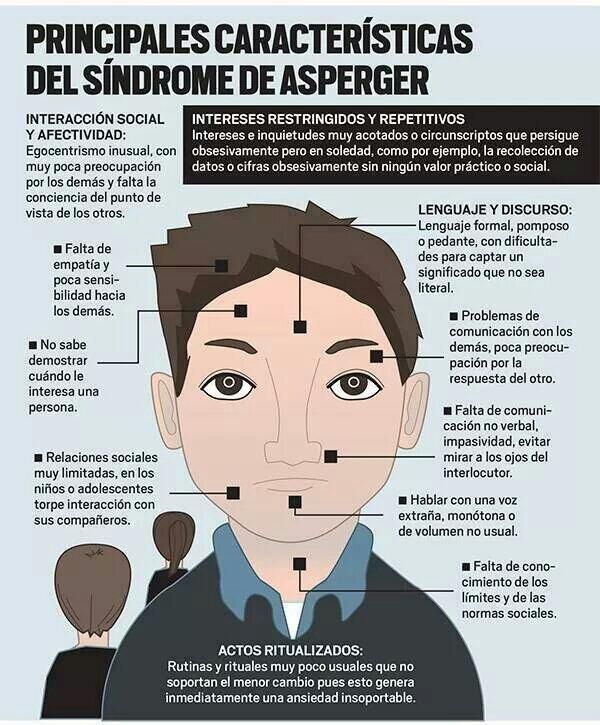 nine0003
nine0003
Attention cues
Use visual cues to help your son trace lines and shapes you have drawn. This will teach him the key skill of making purposeful movements with his writing implements to create certain lines (that is, move from simple marks on the surface to writing).
Here are some options:
— Use a small sticker or ink stamp to mark the starting point of a line or shape for the child to trace or draw. Try to pick up stickers that are related to the child's interests. Place the second sticker at the end of the line so that the child connects the two dots with one line. Try several stickers or shapes at once to show your son how to connect the dots with a pencil or marker. Or just give your child the stickers and have them stick them along the line you drew. nine0003
- Draw a square and ask the child to mark it. First, you will need to set an example for him, for example, draw an “X” in another square.
— Use bright colored paper or paper to get the child's attention.



